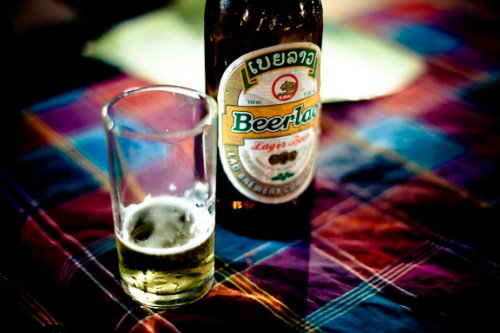Laos Tops WHO List Of Asean Alcohol Consumption
Laos ranks top out of the 10 Asean countries for alcohol beverage/beer consumption, with an average of 7 litres consumed per person per year, according to a survey conducted by the World Health Organisation (WHO).
The results were revealed at a meeting held in Vientiane on Friday to sum up the Community-based Drug Abuse Control Project.
The survey also found that Lao women drink more alcohol than women in other Indochina countries.
Laos has many ethnic groups and each has its own traditions and culture but alcohol plays an important role throughout Lao society, the survey found.
The survey showed that many people spend six months a year (June to November) cultivating crops such as rice and sweetcorn, with some of the crop used to make alcohol.
The rest of the year (December to May) is when many festivals and social events take place. These provide plenty of opportunity for drinking, with people partying hardest over international New Year, the Chinese and Vietnamese New Year, Lao New Year, boat racing festivals and the rocket festival.
In addition, parties are held to celebrate a promotion, a new baby, a wedding, or a new house, while returnees are fervently welcomed home after a trip overseas.
Apart from drinking imported alcohol and beer, the various regions and provinces produce home-made liquor, the most popular of which is a potent rice brew known as lao khao, commonly produced in Khong district, Saravan province. Other forms of rice-based liquor are also prevalent, including a distillation that is drunk from a clay jar through straws.
Unsurprisingly the survey found that the high consumption of alcohol is a frequent cause of road accidents and domestic violence. It has dire effects on people’s health and often puts their safety in jeopardy, with road accidents maiming and killing many people each year.
In 2009, some 5,490 road accidents were reported, leaving 9,664 people injured and 753 dead. In 2010, the number of accidents rose to 5,802, with 11,128 people injured and 775 killed.
In 2011, a total of 6,541 accidents were recorded, leaving 11,503 people injured and resulting in 902 deaths. In 2012, the figures were slightly lower, with 6,164 accidents recorded in which 10,191 people were injured and 888 people died.
In Laos, people’s livers are under attack from three sources – alcohol, hepatitis and liver flukes – all which can prove fatal.
It is common practice for people to force one another to empty their glass when drinking, leading to large amounts of alcohol being consumed over a short period of time. Amid all the merry-making, it seems no one stops to reflect on the fact that this behaviour can have grave health consequences.
The WHO survey also found that the advertising of alcoholic beverages is on the increase in newspapers and magazines and on radio and television.
At the same time the number of bars, entertainment venues, hotels and guesthouses, which are all outlets for alcoholic beverages, is on the rise without restriction, making it all too easyfor people to gather for innumerable drinking sessions.
Source: Vientiane Times

